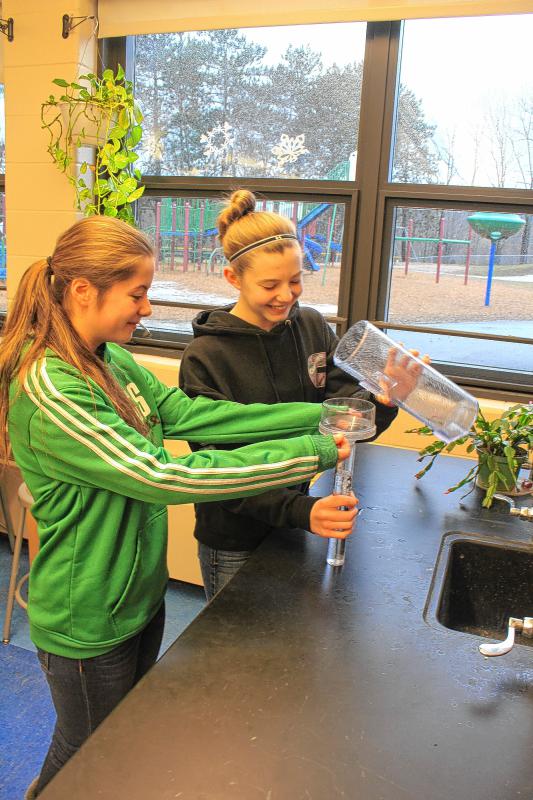Everybody complains about the weather, but nobody does anything about it, a famous person once quipped, but that’s not entirely true: We measure the weather like crazy, and measurement is the first step to control.
Every morning, for example, I check a rain gauge next to my driveway and post the result online. There, it joins tallies from as many as 10,000 locations throughout the U.S. and Canada – including, most mornings, a reading taken by sixth-graders at a school in Strafford.
“The kids are very excited to go out when we get any rainfall, to see what we’ve got,” said Bruce Larson, an Earth sciences teacher who has overseen the Strafford School project for three years.
Larson and I aren’t merely rain geeks – we’re participants in a huge “citizen science” program with the dreadful name CoCoRaHS. And you can join us.
CoCoRaHS stands for Community Collaborative Rain Hail Snow network. It was started at Colorado State University in 1998 after a huge flood took people by surprise, demonstrating the need for more daily rainfall measurements taken at lots and lots of locations, clustered together.
Such data density are important because rainfall varies by a surprising amount over short distances, making a big difference in flood predictions.
In Southern New Hampshire, for example, the Souhegan River has a couple of automated depth gauges that post data wirelessly to the web. The chart for the downstream gauge extrapolates likely flow for several hours in the future, which is quite useful when floodwaters are heading your way, but the upstream gauge can’t do the same because there aren’t enough daily precipitation measurements in the upper watershed.
More observers make a difference, which is why I’m hoping you – yes, you, Dear Reader – will give it a shot.
Things are even more interesting when it snows (not that it did much this year, alas). Under the CoCoRaHS protocol, we gather the white stuff and melt it down to “snow water equivalent,” a number that gives some satisfying exactitude to the casual observation that some snow is fluffy and some is wet. It’s also a very useful number.
“We melted snow last year, and I ended up putting out a roof-collapse warning, based on the mass per square foot from the melt calculations. A number of people went out and shoveled their roofs – including me,” Larson said.
CoCoRaHS has grown to more than 10,000 volunteer stations across the U.S., Canada and a few nearby countries, and its data are now used by meteorologists and planners, not to mention climate modeling.
It’s a poster child for “citizen science” projects, which allow amateurs to help with real science work by gathering data or helping to filter out bad information.
To participate, you need to buy an authorized rain gauge, which has an internal funnel that magnifies depth readings tenfold to make them easier, and which in the weirdness of meteorology measures in tenths of an inch.
“My only disappointment in the program is that we use what I call the dead-king system. Science is rooted in the metric system,” Larson said.
But CoCoRaHS data are particularly important to farmers, who are wedded to what is more formally known as the English units of measure, so it’s inches all the way – although why it’s divvied into tenths instead of powers of two (half, quarter, eighth, etc.) is unclear. It’s like some weird amalgam of metric and English measurement.
I mention all this because CoCoRaHS is in the midst of its annual March Madness, a monthly contest among the 50 states to see which can add the most new observers. New Hampshire came in sixth one year by per-capita measurement, but I think we can do better.
Anybody can become a volunteer: You need to buy a rain gauge and set it up in a suitable location (i.e., not under a roof overhang), create an online account and then – this is the hardest part – prepare to get up before 8 most mornings to submit your 24-hour reading.
Nothing to it: Go to cocorahs.org to check it out.
If you sign up, send me an email. Rain geeks need to stick together.
(David Brooks can be reached at 369-3313, dbrooks@cmonitor.com, or on Twitter @GraniteGeek.)


 Return to the Concord Monitor
Return to the Concord Monitor